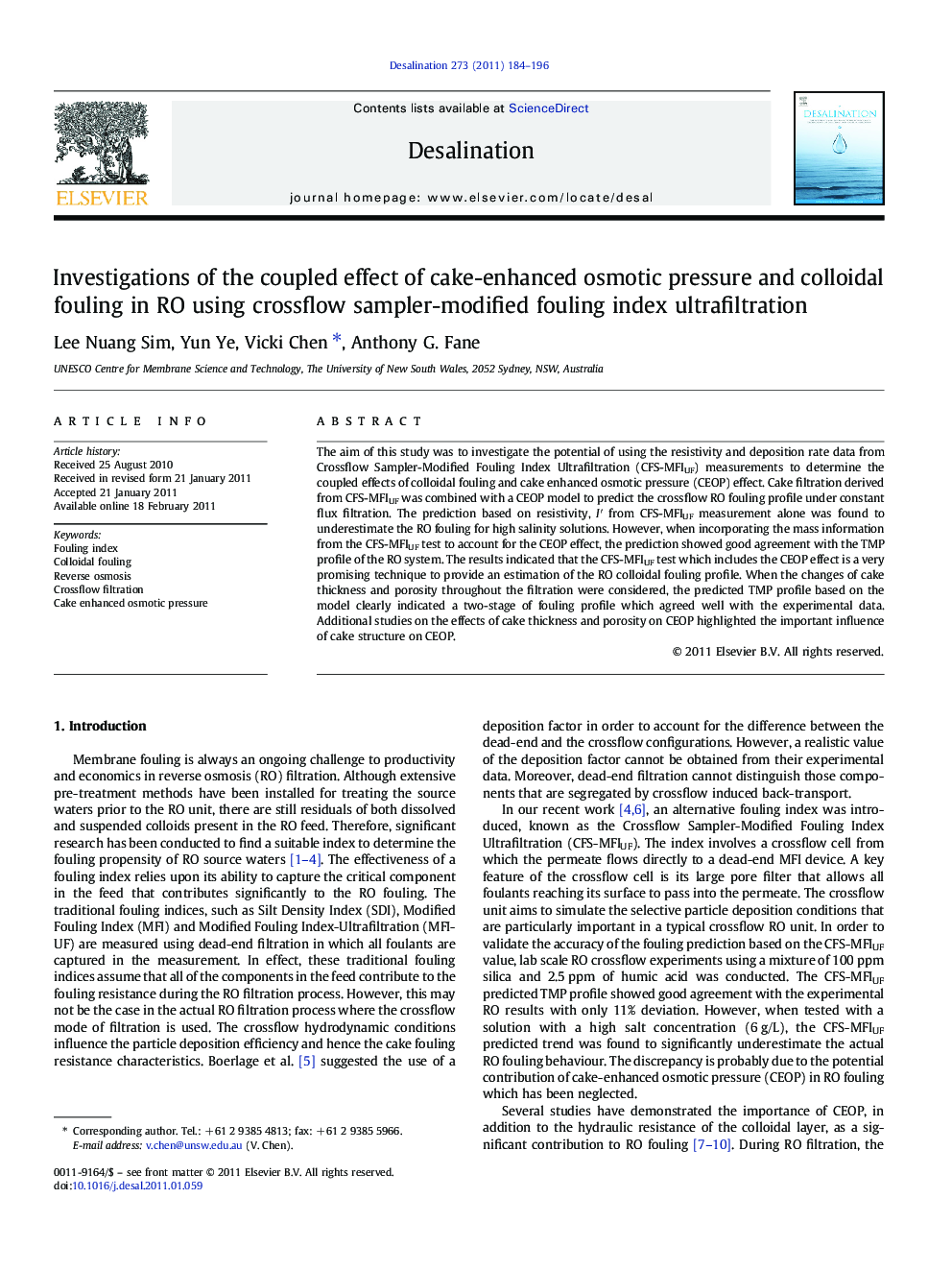| Article ID | Journal | Published Year | Pages | File Type |
|---|---|---|---|---|
| 625193 | Desalination | 2011 | 13 Pages |
The aim of this study was to investigate the potential of using the resistivity and deposition rate data from Crossflow Sampler-Modified Fouling Index Ultrafiltration (CFS-MFIUF) measurements to determine the coupled effects of colloidal fouling and cake enhanced osmotic pressure (CEOP) effect. Cake filtration derived from CFS-MFIUF was combined with a CEOP model to predict the crossflow RO fouling profile under constant flux filtration. The prediction based on resistivity, I′ from CFS-MFIUF measurement alone was found to underestimate the RO fouling for high salinity solutions. However, when incorporating the mass information from the CFS-MFIUF test to account for the CEOP effect, the prediction showed good agreement with the TMP profile of the RO system. The results indicated that the CFS-MFIUF test which includes the CEOP effect is a very promising technique to provide an estimation of the RO colloidal fouling profile. When the changes of cake thickness and porosity throughout the filtration were considered, the predicted TMP profile based on the model clearly indicated a two-stage of fouling profile which agreed well with the experimental data. Additional studies on the effects of cake thickness and porosity on CEOP highlighted the important influence of cake structure on CEOP.
Research highlights► Quantify CEOP through mass information from fouling index (CFS-MFIUF) measurement. ► Combined model of CFS-MFIUF and CEOP provide reasonably good RO fouling prediction. ► Both foulant loading and cake morphology influence CEOP. ► Cake porosity can significantly influence the magnitude of CEOP.
